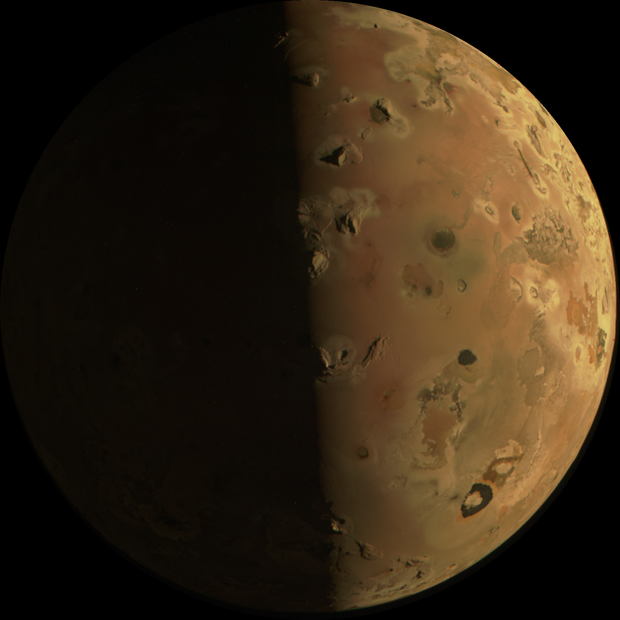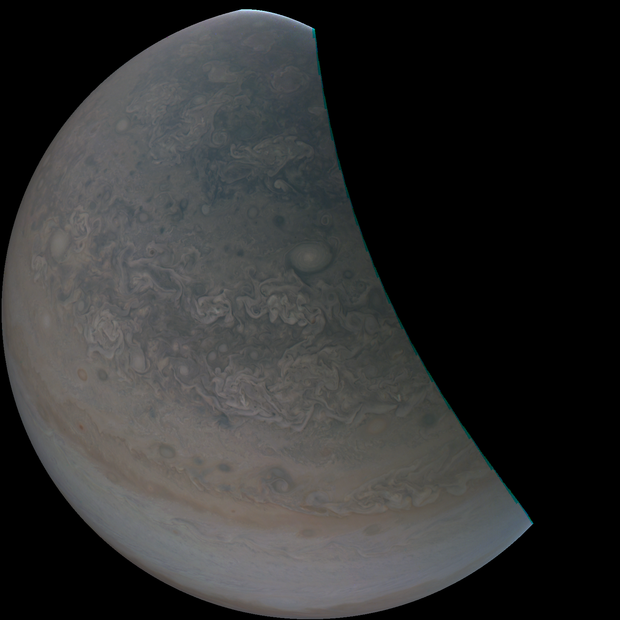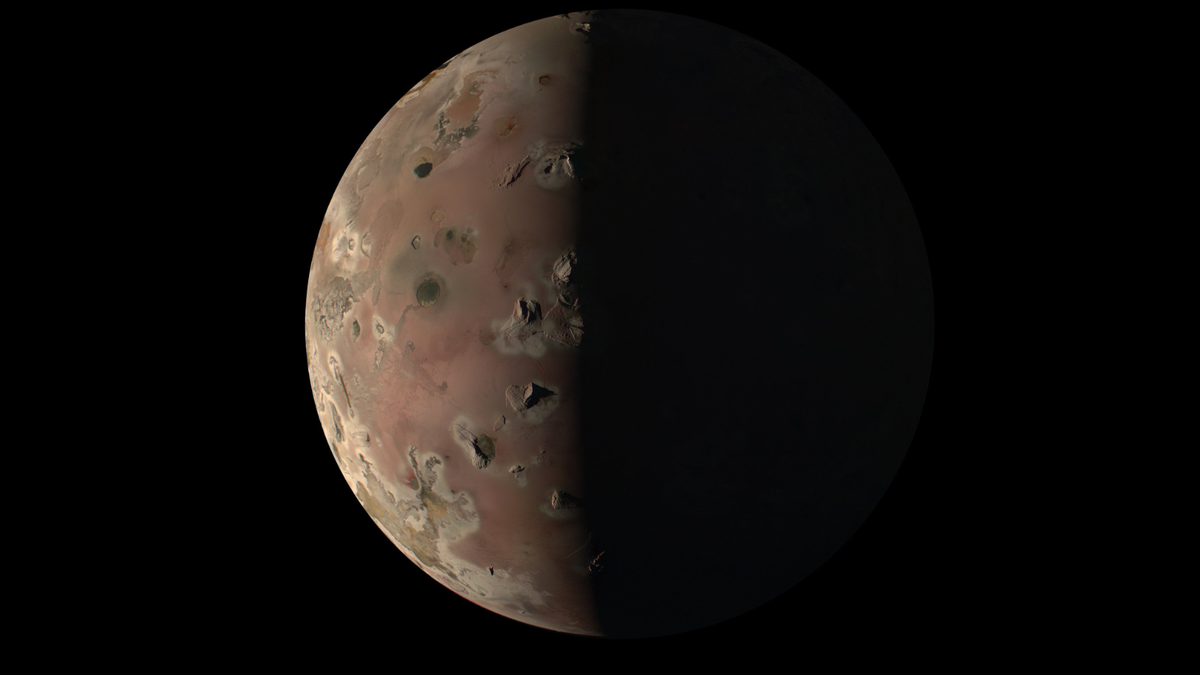
Jupiter's moon Io is a fascinating world, with its surface dotted with hundreds of active volcanoes. During NASA's Juno spacecraft flyby on December 30th, the instrument recorded remarkable volcanic activity that will help scientists better understand tidal forces powering such activity and answer questions about whether a magma ocean exists beneath Io's volatile surface. The latest flyby altered Juno➗s orbit from 38 days to 35 days, which will increase the number of times Juno➗s solar panels are eclipsed by Jupiter. However, NASA engineers believe this won't leave the craft in darkness long enough to damage its systems.






